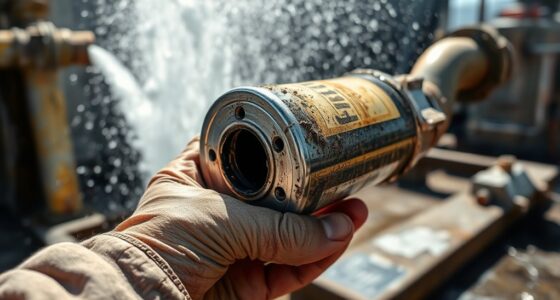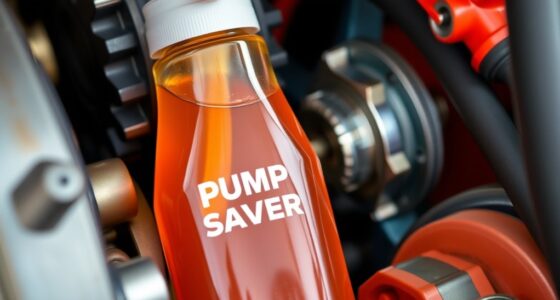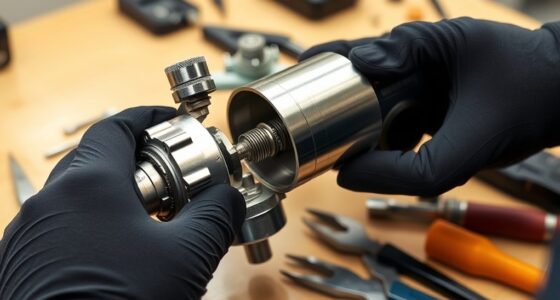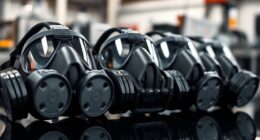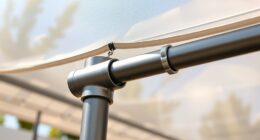Choosing between water or solvent flushes depends on your coating type. Use water for waterborne coatings like latex paints, since it’s cost-effective and eco-friendly. Switch to solvent flushes for oil-based paints or industrial finishes, as they dissolve residues a water flush can’t remove. Properly drying afterward is vital to prevent rust. Stick with the right method for your materials, and you’ll guarantee ideal equipment performance—more insights will help you make the best choice.
Key Takeaways
- Use water flushes for waterborne or latex paints, ensuring easy cleanup and environmental safety.
- Opt for solvent flushes when removing oil-based, industrial, or solvent-based coatings for thorough cleaning.
- Always dry equipment completely after flushing to prevent rust and corrosion, regardless of the method.
- Consider cost, safety, and environmental impact: water flushes are cheaper and eco-friendlier, while solvent flushes are more effective for stubborn residues.
- Properly select and execute the flush type based on coating material and equipment to maintain longevity and performance.
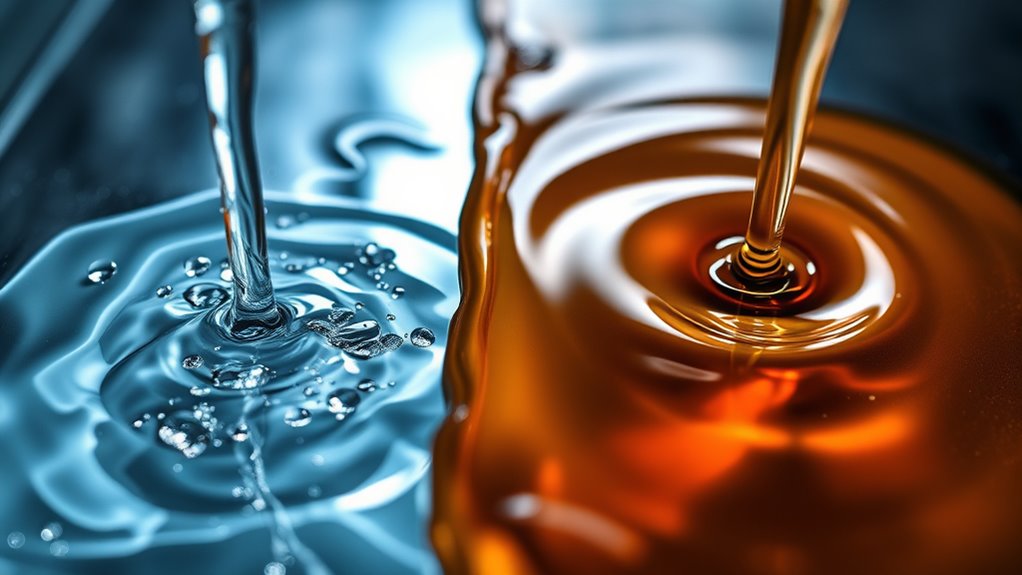
Have you ever wondered what steps to take after completing a job to make sure your equipment stays in top shape? The post-job flush is a critical part of that process, and choosing between water and solvent for cleaning your equipment can substantially impact your results and maintenance needs. Your decision depends on the type of coating you’ve applied, the equipment used, and the environment you work in. Understanding the differences will help you avoid costly damage, guarantee ideal performance, and extend the lifespan of your tools.
Water-based flushes are generally the go-to choice for waterborne coatings or latex paints. They’re easy to use, readily available, and less harmful to the environment. When you opt for water, you simplify cleanup and reduce the need for hazardous solvents. After your project, you simply run water through your equipment, which dissolves remaining paint or coating residues. This process is straightforward, quick, and effective for water-soluble materials. However, water flushes may not be suitable if your work involves solvent-based coatings, as they won’t effectively remove oil-based paints, varnishes, or certain industrial finishes. Additionally, water can cause rust or corrosion if equipment isn’t dried properly after flushing. So, if you’re working with waterborne products, a water flush is your best choice, but always guarantee thorough drying afterward.
Water flushes are ideal for waterborne coatings but require thorough drying to prevent rust and corrosion.
On the other hand, solvent-based flushes are essential when dealing with solvent-based coatings, such as oil paints, enamels, or industrial primers. These solvents dissolve residues that water cannot, providing a more thorough clean for equipment used with these materials. They’re especially valuable when switching between different types of coatings or when residues are stubborn. Solvent flushes also evaporate quickly, reducing the risk of leftover residues that could interfere with future jobs. However, they come with drawbacks: they’re often more expensive, require careful handling due to their flammability and fumes, and demand proper disposal to avoid environmental harm. If you regularly work with solvent-based products, investing in a good solvent flush system makes sense, but always prioritize safety and proper ventilation.
Your choice ultimately hinges on what you’ve just applied and the equipment’s material. For waterborne coatings, water flushes are simple, cost-effective, and eco-friendly. For solvent-based coatings, solvents are necessary to ensure complete removal and prevent issues down the line. Keep in mind that whichever you choose, thorough cleaning and drying are essential to prevent corrosion, buildup, and equipment failure. By making the right choice and following proper procedures, you’ll keep your tools in top condition, guaranteeing consistent quality in every project.
Frequently Asked Questions
How Long Should a Post-Job Flush Typically Take?
A post-job flush typically takes about 15 to 30 minutes, depending on your coating and equipment. You should run water or solvent through the system until the outflow runs clear, indicating all residual material is eliminated. Make sure to monitor pressure and flow rates to avoid system damage. Proper flushing ensures your equipment stays clean and your coating quality remains high, preventing future contamination or issues.
Are There Environmental Differences Between Water and Solvent Flushes?
You’ll find that water flushes are much gentler on the environment, releasing minimal harmful emissions and producing biodegradable waste. In contrast, solvent flushes can release a torrent of volatile organic compounds (VOCs), polluting air and water sources. Water-based methods drastically reduce your ecological footprint, making them the hero for eco-conscious projects. Choosing water over solvent means you’re actively protecting ecosystems, cutting down hazardous waste, and promoting sustainability in your coating processes.
Can Improper Flushing Cause Coating Failure?
Yes, improper flushing can cause coating failure. If you don’t thoroughly remove residual coating materials, contaminants, or solvents, it can lead to adhesion issues, uneven curing, or surface defects. Skipping proper flushing or using the wrong method might leave residues that compromise the coating’s durability and appearance. Always verify you select the appropriate flush for your coating type and follow recommended procedures to prevent failures.
What Safety Precautions Are Needed During Flushing?
You should always wear proper PPE—gloves, goggles, and a respirator—because flushing releases potentially hazardous fumes and splashes. Work in a well-ventilated area to avoid inhaling dangerous vapors. Keep fire extinguishers nearby, as some solvents are flammable. Never rush the process; slow, deliberate movements prevent accidents. By following these precautions, you guarantee safety while effectively removing residues, avoiding hazardous exposures, and maintaining a safe workspace.
How Often Should Flushing Procedures Be Reviewed or Updated?
You should review and update your flushing procedures at least annually, or whenever there are changes in equipment, materials, or regulations. Regular reviews assure safety and effectiveness, keeping your process aligned with current standards. Additionally, after any incident or near-miss, update procedures immediately. Staying proactive helps prevent issues, maintains compliance, and ensures your team understands the latest best practices for water or solvent flushing.
Conclusion
Choosing the right post-job flush can make or break your coating’s success. Water and solvents each have their strengths, but the wrong choice can turn your project into a nightmare. Imagine your finish shining like a diamond—only to be marred by improper cleaning. Make the smart call, weigh your options carefully, and guarantee your coating stays flawless. The right flush isn’t just a step; it’s the secret weapon to professional perfection.



